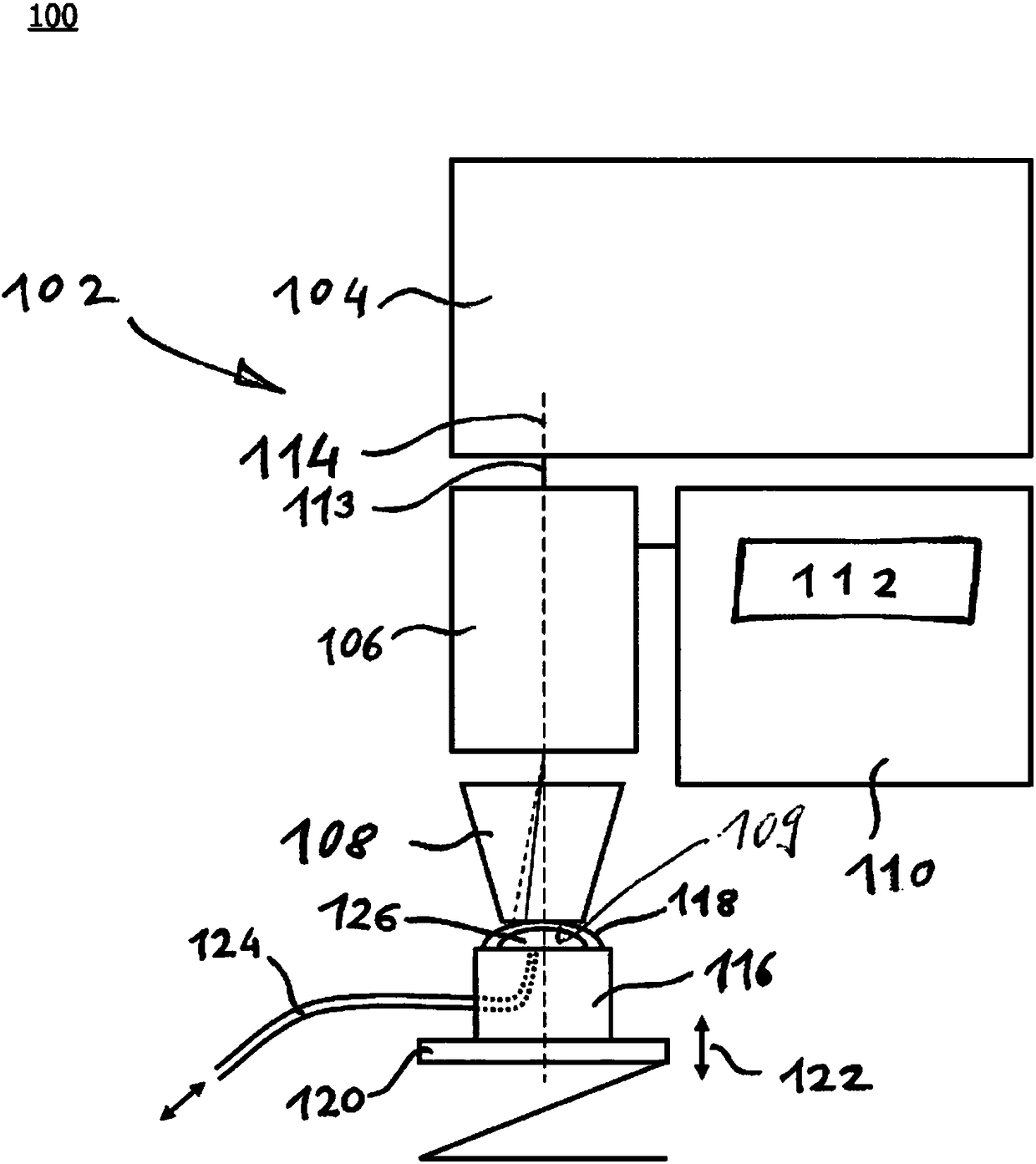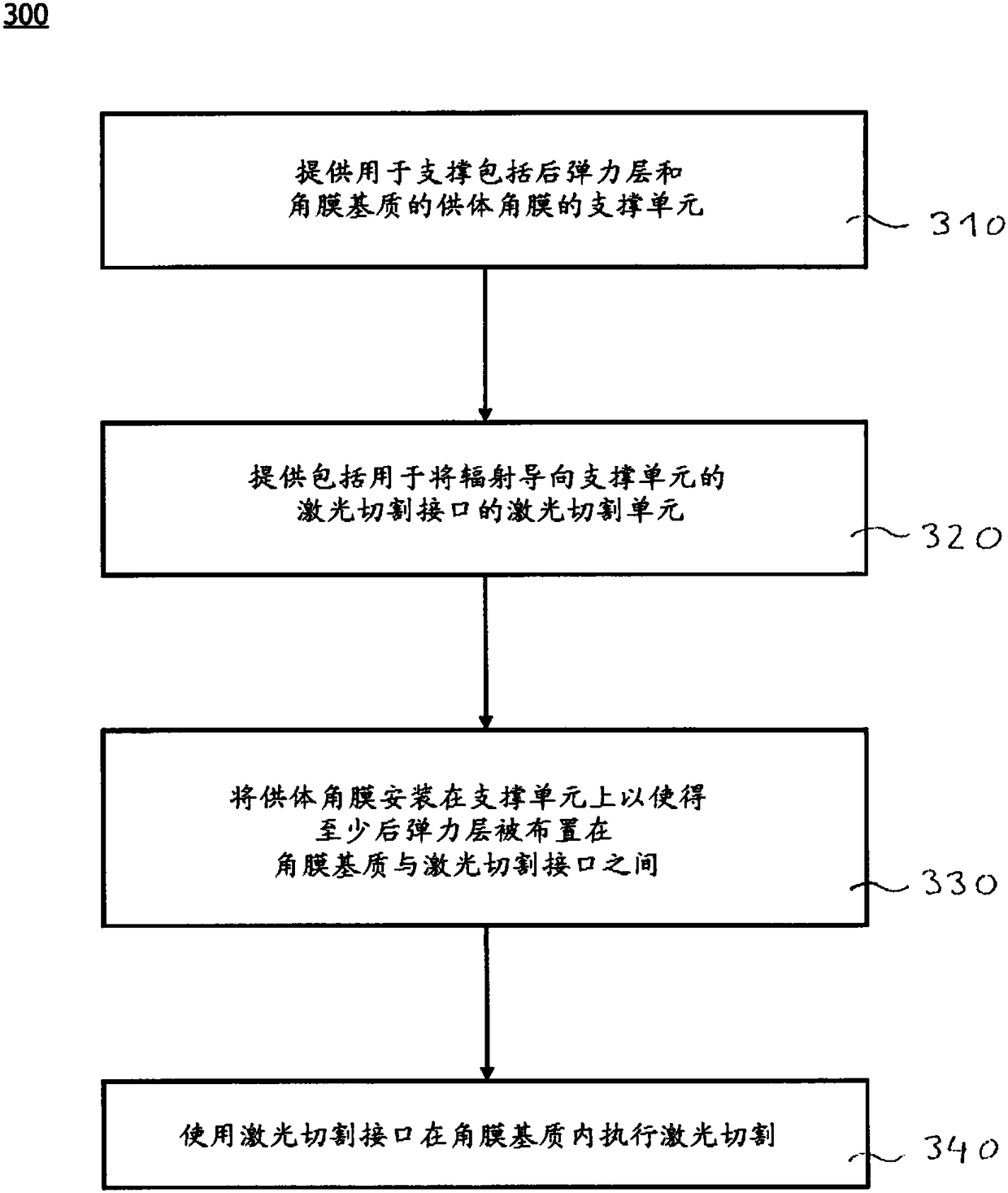Techniques used for laser cutting endothelial corneal grafts
An endothelial cornea, laser cutting technology, applied in laser surgery, ophthalmic surgery and other directions, can solve the problems of endothelium cannot be repaired, damaged, and cannot be regenerated.
- Summary
- Abstract
- Description
- Claims
- Application Information
AI Technical Summary
Problems solved by technology
Method used
Image
Examples
Embodiment Construction
[0045] figure 1 A laser system 100 equipped to allow a surgeon to fabricate an endothelial graft from a cadaveric donor cornea is schematically shown. The laser system 100 includes a laser cutting device 102 and a support unit 116 . The laser cutting device 102 includes a laser radiation source 104, focusing and deflection optics 106, and a laser cutting interface 108 (sometimes referred to as a patient interface or adapter when the laser cutting device 102 is used for laser treatments). The laser cutting device 102 also includes a control unit 110 including a control program 112 .
[0046] Source 104 produces pulsed laser radiation 113 propagating along optical axis 114 . Laser pulses have pulse durations in the attosecond, femtosecond, picosecond or nanosecond range. The energy density (i.e., fluence) and intensity of the pulses are suitably selected to irradiate a specific tissue location with a predetermined number of pulse(s) to achieve photodisruption (which includes ...
PUM
 Login to View More
Login to View More Abstract
Description
Claims
Application Information
 Login to View More
Login to View More - R&D
- Intellectual Property
- Life Sciences
- Materials
- Tech Scout
- Unparalleled Data Quality
- Higher Quality Content
- 60% Fewer Hallucinations
Browse by: Latest US Patents, China's latest patents, Technical Efficacy Thesaurus, Application Domain, Technology Topic, Popular Technical Reports.
© 2025 PatSnap. All rights reserved.Legal|Privacy policy|Modern Slavery Act Transparency Statement|Sitemap|About US| Contact US: help@patsnap.com



